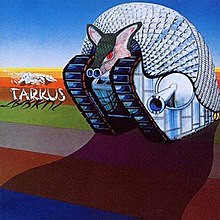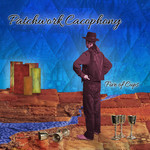1971 – Uriah Heep, Salisbury
1971 was amongst the hardest years for me to choose an album from. In the end Deep Purple’s Fireball missed out because In Rock was the winner for 1970. I chose Uriah Heep’s Salisbury over both ELP’s Tarkus because, though they are both albums made special by their title track, I find Salisbury to be an album of songs with a shining gem of a piece, where Tarkus is a shining gem of a piece surrounded by filler. So, Salisbury it is then.
 The album opens in dramatic style with Bird of Prey (unless you live in the US, which has a different track listing!) interspersing guitar riffing with stacked vocal “ahhs”. Byron’s mid-high range can be a little thin at times but generally his voice is good and the effect here is unusual and grabs attention. True to style, though it starts like a fairly straightforward rocker, the track has a few changes of pace and extended ideas which make it more interesting.
The album opens in dramatic style with Bird of Prey (unless you live in the US, which has a different track listing!) interspersing guitar riffing with stacked vocal “ahhs”. Byron’s mid-high range can be a little thin at times but generally his voice is good and the effect here is unusual and grabs attention. True to style, though it starts like a fairly straightforward rocker, the track has a few changes of pace and extended ideas which make it more interesting.
The next four tracks wander back and forth between styles with The Park being a pleasant laid back drifter of a number, Lady In Black an driving acoustic number sung by Ken Hensley, and Time To Live and High Priestess being rockier.
But really, this album is all about the title track. A magnificent piece of progressive rock mixing a small orchestra with the rock group. Unlike Jon Lord’s Concerto which is quite classical, this is a more standard rock instrumentation using the orchestra more in “horn section” fashion. As a piece, it goes through several well-defined sections. Opening with orchestra and hammond, broken up by a woodwind break, it finally comes together rhythmically after about two minutes and before breaking into a vocal section.
Lyrically it’s pretty banal — the story of the birth and death of a love affair, going full circle into the arrival of the next love — but for some reason the lyrics don’t detract much for me. It’s well sung. Actually, those vocals deserve mention: having previously said that Byron’s voice can be a bit thin at time, he pulls a blinder in this track ranging from soft and delicate to powerful and resonant, with very little use of his scream register.
It’s a beautifully orchestrated piece, both in terms of the writing of the individual lines and in terms of the wider development from section to section. It contains some fabulous hammond and guitar work, and the orchestra feels very much and choral parts feel like an inherent part of the composition rather than something thrown on top of a rock band in a kind of just-add-bombast way.
All in all it’s a track which serves as a shining example of one approach to the dangerous classical-meets-rock territory which so often falls flat one way or another.
Honorable Mention: Tarkus
 If the contest were between the title tracks of the album alone, I would be writing this article about Emerson, Lake and Palmer’s Tarkus. A monstrous tour de force, dominated by Keith Emerson’s hammond playing, but with plenty of other things going on to keep it interesting.
If the contest were between the title tracks of the album alone, I would be writing this article about Emerson, Lake and Palmer’s Tarkus. A monstrous tour de force, dominated by Keith Emerson’s hammond playing, but with plenty of other things going on to keep it interesting.
Perhaps it’s a little unkind to describe the other tracks on the album as filler, but while there is some nice work on there, they certainly pale in comparison to the title track, and as much as I like light-hearted tracks (Genesis’s Harold The Barrel would make my Desert Island Discs collection) I find both Jeremy Bender and Are You Ready Eddie? to be all light and no heart.
Tags: album-of-the-year|Flattr this!
